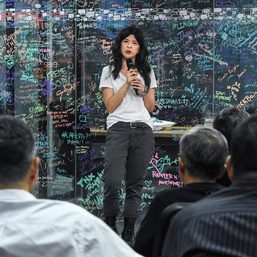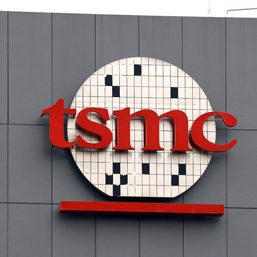SUMMARY
This is AI generated summarization, which may have errors. For context, always refer to the full article.

MANILA, Philippines – Philippine news sites collectively scored a “moderate level of disinformation risk” in the newly launched Philippine report of the UK-based not for profit Global Disinformation Index (GDI).
Released on Wednesday, February 15, the index examined a total of 35 “influential and widely read news sites” in the Philippines in written English, Tagalog, and Cebuano. Collectively, the websites received an average score of 55.32 on a scale of 0 to 100.
Broken down by domain, 23 websites scored medium to minimum risk, while 12 received high risk ratings. None of the websites made it to the maximum risk category. On the other hand, only one website got a minimum disinformation risk rating.
Editor’s Note: An earlier version of this story said only one site received a low risk score. This was corrected to say only one site received a minimum risk score.

GDI research director Talia Hagerty stressed that GDI’s risk rating methodology is not meant to label a disinformation source.
“If a site is rated to be at high risk for disinforming its readers, it is just that it is a risk rating. It means that there are areas for improvement and potentially areas of concern. But it does not mean that a particular news outlet is a disinformation source,” Hagerty said.
The index reviewed top news websites such as ABS-CBN News, GMANews, Inquirer, Philstar.com, and Rappler. It also included regional newsrooms such as Mindanews, which is based in Davao City, and Daily Guardian in Iloilo.
While the GDI identified the news websites that were part of the sample, it chose not to release the actual rating that each of the site received.
Not meant to ‘label,’ ‘shame’ news sites
The point is not to “name and shame,” explained Hagerty at the launch on Wednesday at the De La Salle University McKinley Microcampus in Taguig.
The index, which covered over 20 countries so far, should be used to help newsrooms and journalists improve their disinformation risk ratings, according to Hagerty. A number of the rated news organizations have already reached out and asked how their ratings could be improved, she added.
Hagerty said the UK-based non-profit, whose avowed goal is to “defund and downrank disinformation,” works with country teams to implement a global methodology for assessing news sites. In the Philippines, GDI worked with the De La Salle University’s Dr. Andrew L. Tan Data Science Institute which hosted the launch event.
The report explained that the GDI views disinformation through the lens of “adversarial narrative conflict,” meaning intentionally misleading narratives, often cherry-picked and combined with fabrications that are adversarial in nature and create harm against an at-risk group or institution.
Hagerty said GDI shares information with policy makers, newsgroups and industry. The report said trust ratings are used by advertisers, ad tech companies, and platforms to redirect their online ad spending, in line with their brand safety and disinformation risk mitigation strategies.
The end goal is to “catalyze industry to reduce disinformation and its harms by going after the financial incentives to create disinformation.”
Risk, not actual false content
In terms of content, Philippines news sites generally performed well under the content pillar with an average score for the 35 sites included in the sample of 85 out of 100. The content pillar ratings ranged from 68 to 93.
This was determined through an anonymous review of a sample of 20 articles from each site. Researchers who made the assessment did not know the news outlet that published the story. The sampled articles were anonymized by stripping them of any information that allowed the analysts to identify the publisher or the author of the articles.
Indicators under this pillar include visual presentation, headline accuracy, article bias, byline information, sensational language, negative targeting, recent coverage, lede present, and common coverage.
Here, the news sites scored highest for visual presentation (average of 95) and headline accuracy (average of 92). The indicators with the lowest scores under the content pillar were lede present (average of 78) and common coverage (average of 72).
Lede present is the rating for when the article starts with a fact-based lede. Common coverage, on the other hand, is defined as whether the same event has been covered by at least one other reliable local media outlet. Cleve Arguelles, one of the country level researchers who worked on the study, said this was likely because the sample included regional websites which were focused on local stories.
Operational risks
Where most sites falter is in the operations pillar. Ratings for this pillar among Philippine news sites reviewed ranged from 11 to 50, with 80% (28 out of 35) of the sites receiving a score below 40 out of 100.
The operations pillar assesses the operational and editorial integrity of the site, as scored by country reviewers. On the whole, Philippine news sites performed worst in the areas of attribution, ensuring accuracy, funding, and ownership transparency.
This noticeable disparity between sites’ scores on the content pillar and the operations pillar, the report said, means that most of the disinformation risk stems from operational shortcomings, particularly in the areas of ensuring accuracy, attribution, funding and ownership transparency, and comment policies.
For the most part, Hagerty said news websites could improve on their ratings by being more transparent about their operational policies.
Recommendations for improvement
According to the country team, the selection of websites examined was based on Alexa ranking and relevance, with a mind to ensure geographic representation. Below is the list of the websites reviewed.

Because of the disparity between the sites’ scores in the content and pperations pillars, the study noted that opportunities for improving disinformation risk ratings lies in establishing and publishing policies that ensure the editorial integrity of news sites.
For instance, to address low scores on attribution, news sites should set and publish policies regarding articles’ sources and bylines.
To improve scores on ensuring accuracy, news sites must set and publish policies for pre-publication fact-checking and post-publication error correction.
To improve risk ratings in terms of funding and ownership transparency, news sites must disclose their sources of funding and revenue, as well as the persons and/or legal entities that own and manage their organizations. – Rappler.com
Add a comment
How does this make you feel?






![[Free to disagree] Patiño and Tabar: Dim, deviant or despicable?](https://www.rappler.com/tachyon/2024/03/TL-dim-deviant-or-despicable-mar-26-2024.jpg?resize=257%2C257&crop=221px%2C0px%2C720px%2C720px)










![[Rappler Investigates] Dangers of TikTok](https://www.rappler.com/tachyon/2024/04/dangers-tiktok-april-18-2024.jpg?resize=257%2C257&crop=309px%2C0px%2C1080px%2C1080px)
There are no comments yet. Add your comment to start the conversation.